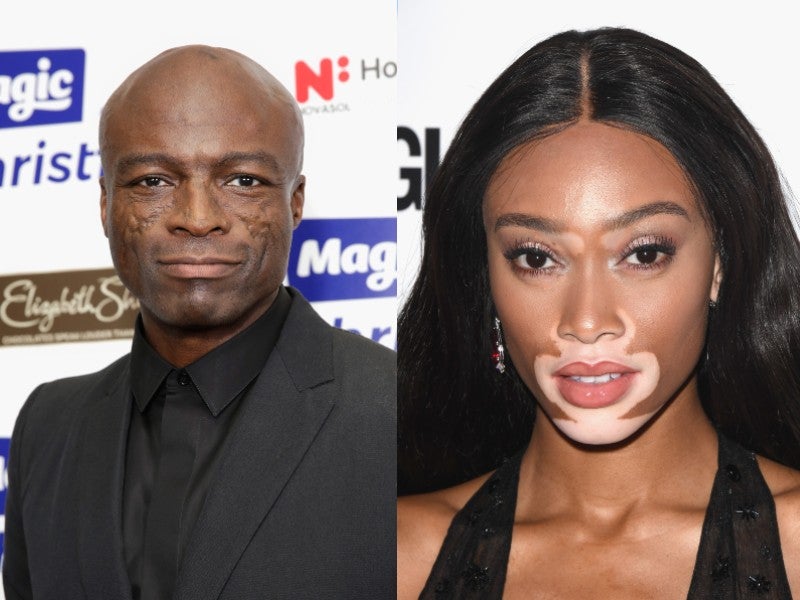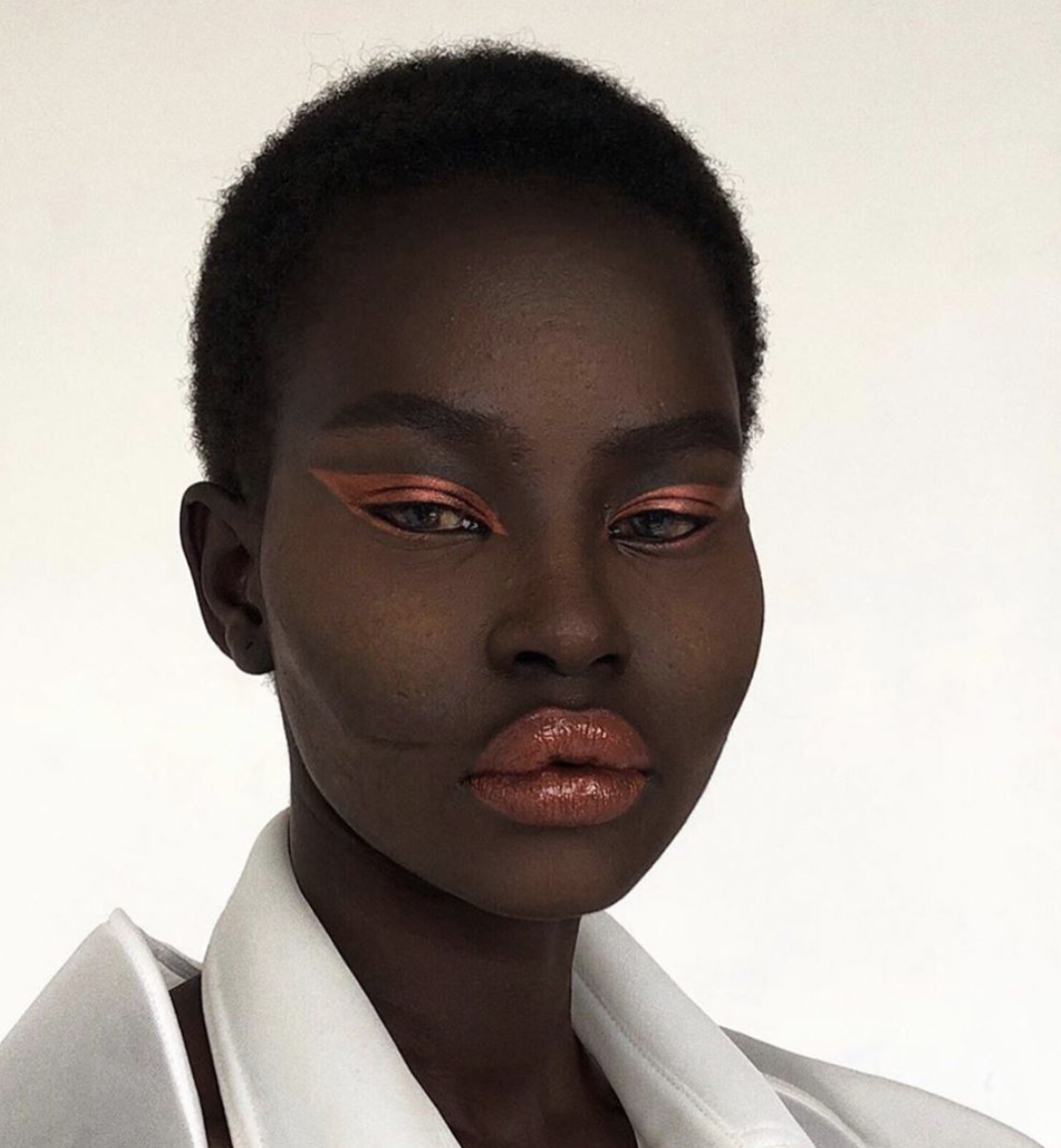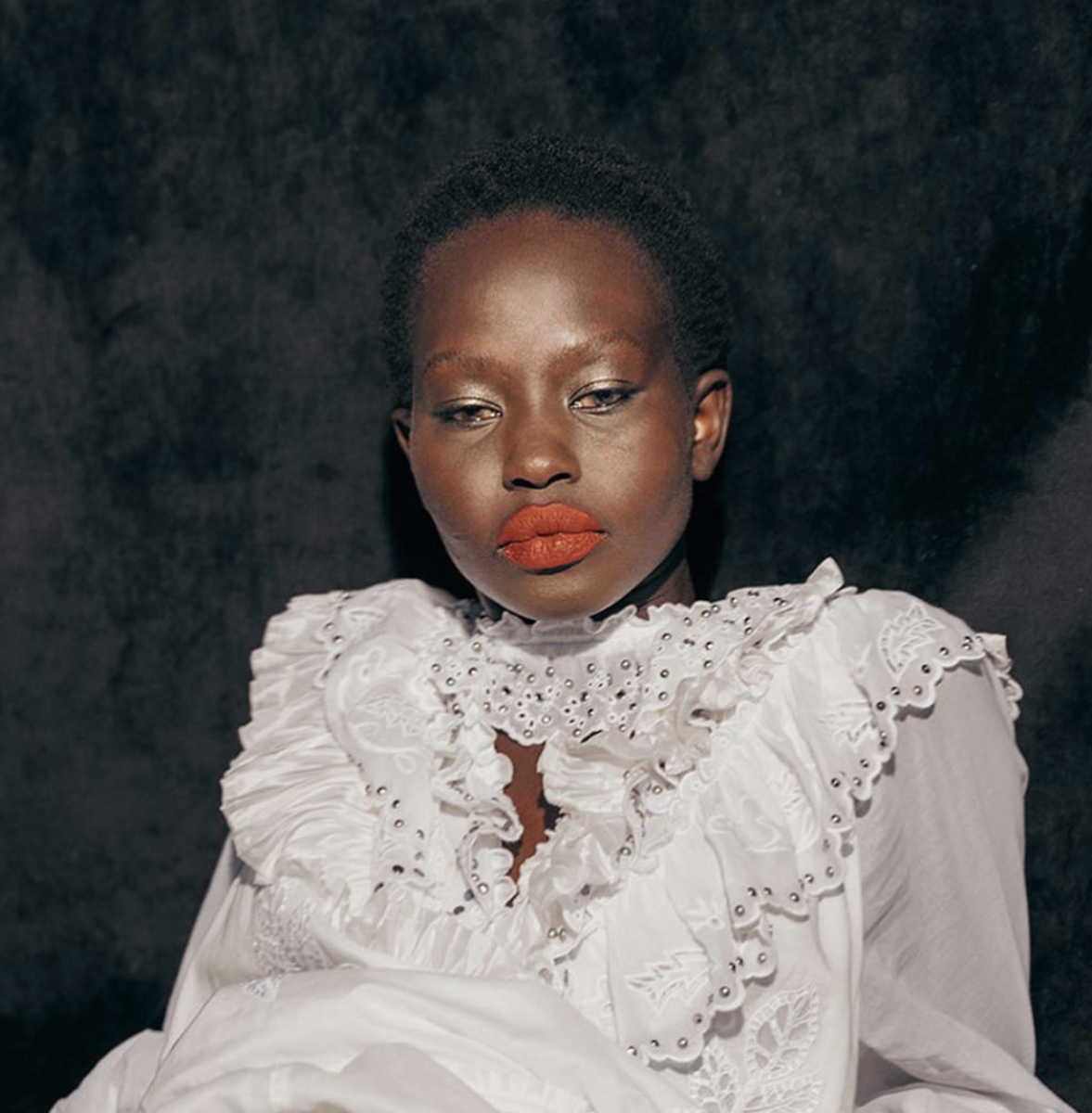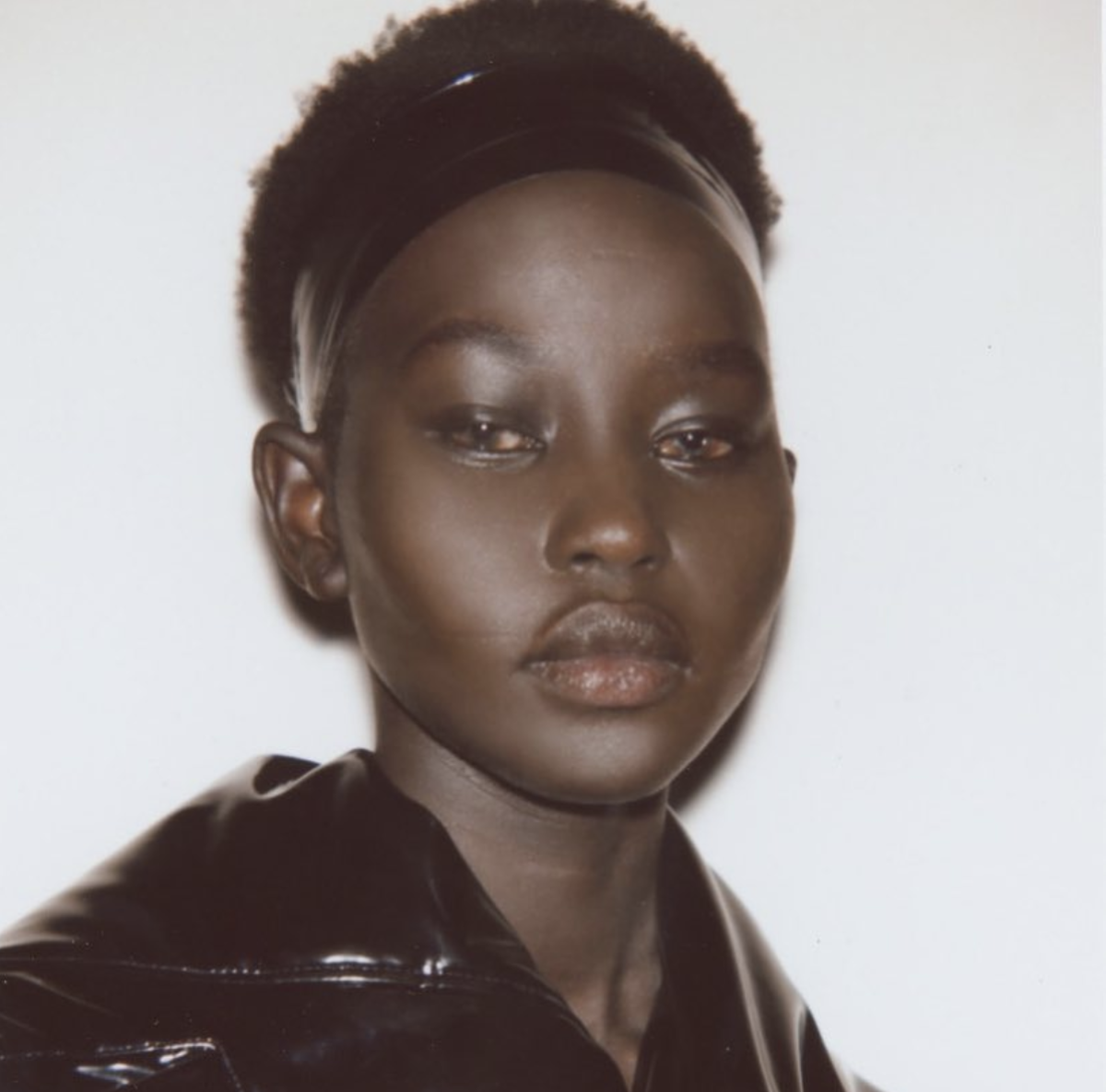
Since debuting her Fenty Beauty by Rihanna brand in 2017, Rihanna has been given the gold star for setting a higher standard in the way we see beauty, and how brands manifest that through their product lines. So when the news dropped that she would helm the first Black woman led luxury clothing line with LVMH, folks hit the roof. The ‘Rihanna can do no wrong’ rhetoric was in full circulation.
While the Fenty Instagram account currently boasts less than 500K followers and only has 10 posts, the expectation that the brand will deliver is high. Following up on her success with pretty much every drop from Fenty Beauty, the “Love On The Brain” singer is expected to make waves in the fashion world. This week she did exactly that when everyone caught wind of Fenty.com photos featuring Kenyan-born Sudanese model Aweng Chuol, scars and all. Rihanna could have insisted on covering up the scars with Fenty Beauty foundation and concealer, touched up the photos, and used it as another avenue to push her beauty line (which at this point isn’t starving for buzz, everyone’s hooked).
Instead, the photos explicitly showcase Chuol’s natural beauty and facial scars, something many brands might consider uncovetable imperfections. The close-up shots are from the website’s fashion and jewelry section, where the model is wearing a bright white button up and beautiful gold and crystal ear cuffs.
In an interview last September with Dazed, Aweng Chuol explained that the scars were from a childhood of chasing chickens, being adventurous, and climbing trees. In Kenya, those scars were seen as a rite of passage into womanhood.
“What had made me beautiful before in my culture was now making people call me ‘ugly.’ So I had a very conflicted perception of beauty when I was a kid,” she said, explaining how things shifted when her family moved from Kenya to Australia when she was seven. “I was the only African female in my entire school. I began to think I must be ugly. I didn’t look like the next person. The next person didn’t look like me.”
It’s a feeling we can relate to all too well in the Black community. Being inundated with Eurocentric images of beauty via movies and the television shows we grew up watching (for me it was Beverly Hills 90210, Saved By The Bell, Buffy The Vampire Slayer, Pretty Woman), and then experiencing colorism within the Black community—a remnant of slavery that negatively effects Black women of all shades—we are sometimes left with an unrealistic and self-deprecating view of what true beauty is.
There’s also an unfair tendency to make assumptions about facial scarring on people from Africa. Rumors swirled for years about how platinum recording artist Seal got the scars on his face. Many thought they were tribal ritual scars, or the evidence of a traumatic West African upbringing (Seal is Nigerian but grew up in London), but the singer has a form of lupus that has caused scarring on his face and head (hence the baldy). His scars have been met with ambivalence. On one hand people have embraced them—he was married to German supermodel Heidi Klum for nine year—and on another hand his facial scars have still been the center of mean jokes.

Model Winnie Harlow opened up the conversation about vitiligo, a condition where random areas of the skin lose pigment, when she entered America’s Next Top Model back in 2014. She has been vocal about vitiligo simply being a skin condition, not the cause of a life of suffering. She has served as a source of inspiration for young people with the condition, standing as an example that it doesn’t have to hinder your dreams, even if you dream to be a supermodel. And models Adau Mornyang and Yanii Gough are amongst a slew of new talent who have embraced their facial scars. But that doesn’t mean that brands will always embrace those scars, or showcase them in their campaigns. We often see Choul’s face looking flawless on social media and in editorial shoots, her small scars untraceable.



“I know I’m different, I know my facial features are different, but to me that’s beauty.”
Fenty’s insistence on leaving Chuol’s scars is being applauded by fans because in a world of filters and social media contrived existences, people are yearning for something real. And if there’s one thing that Robyn Rihanna Fenty gives an abundance of, it’s realness. But this campaign goes beyond us seeing Chuol’s scars. Her scars represent Fenty’s entire culture of changing the conversation about what’s considered acceptable forms of beauty, and how brands should interact with, and serve that beauty. Some might want to display those scars as exotic—beauty from someone else’s gaze. But for Chuol, she gets to post this photo for the world to see, and perhaps for the first time, truly see her as she sees herself.
And for the next young African girl, or girl from the African diaspora, who has scars that she had otherwise been told were not beautiful, she gets to redefine how she sees them. And if she wants, she can cover them up with Fenty, or not.
